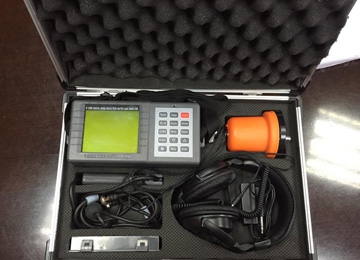The overview of Water Leak Detectors
Label:
Solar Panel
Water Turbine
Sanitary Garbage Truck
Agriculture Meter
Introduction
A Water Leak Detector is an essential device designed to identify and locate leaks in various systems, such as plumbing, HVAC, industrial pipelines, and gas systems. It plays a critical role in preventing water damage, conserving resources, and ensuring safety by detecting leaks early. This encyclopedia provides an overview of leak detectors, their types, working principles, applications, and key features.
Types of Leak Detectors
Water Leak Detectors:
Used to detect water leaks in residential, commercial, and industrial settings.
Common types include spot detectors, cable-based detectors, and wireless sensors.
Gas Leak Detectors:
Designed to identify leaks of combustible or toxic gases, such as methane, propane, or carbon monoxide.
Often used in homes, laboratories, and industrial facilities.
Refrigerant Leak Detectors:
Specifically used in HVAC systems to detect leaks of refrigerants.
Includes heated diode, infrared, and ultrasonic detectors.
Ultrasonic Water Leak Detectors:
Detect leaks by sensing high-frequency sounds produced by escaping gases or liquids.
Suitable for compressed air systems, steam lines, and vacuum systems.
Electronic Leak Detectors:
Utilize sensors to detect changes in moisture levels or gas concentrations.
Commonly used in plumbing and HVAC systems.
Working Principle
Leak detectors operate based on various technologies:
Acoustic Detection: Identifies leaks by listening for the sound of escaping liquids or gases.
Moisture Sensing: Detects water leaks by measuring changes in moisture levels.
Gas Sensing: Uses chemical sensors to detect the presence of specific gases.
Pressure Drop Monitoring: Identifies leaks by measuring pressure changes in a system.
Thermal Imaging: Detects temperature variations caused by leaks.
Applications of Water Leak Detector
Residential:
Detecting water leaks in basements, bathrooms, and kitchens.
Monitoring gas leaks for safety.
Commercial:
Preventing water damage in offices, hotels, and retail spaces.
Ensuring HVAC systems are leak-free.
Industrial:
Monitoring pipelines, tanks, and machinery for leaks.
Detecting gas leaks in chemical plants and refineries.
Environmental:
Identifying leaks in underground water or gas pipelines.
Preventing contamination of soil and water sources.
Key Features
Sensitivity: High sensitivity to detect even minor leaks.
Portability: Compact and lightweight for easy use in various locations.
Alarm Systems: Audible and visual alerts to notify users of leaks.
Connectivity: Integration with smart home systems or mobile apps for remote monitoring.
Durability: Designed to withstand harsh environments.
Battery Life: Long-lasting batteries for continuous operation.
Advantages
Prevents costly damage and repairs.
Enhances safety by detecting hazardous gas leaks.
Conserves water and energy by identifying leaks early.
Reduces environmental impact by preventing contamination.
Conclusion
Water Leak Detectors are indispensable tools for maintaining the integrity of water, gas, and HVAC systems. With advanced technologies and user-friendly designs, they provide reliable and efficient leak detection solutions for residential, commercial, and industrial applications. Investing in a high-quality leak detector can save resources, protect property, and ensure safety.